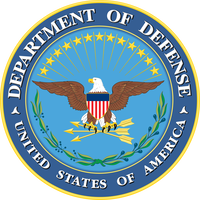Secretary of Defense (DOD)Description of Role:
The secretary of defense is the principal defense policy advisor to the president, under whose direction they exercise authority over the Department of Defense. In National Security Council (NSC) meetings, the secretary analyzes the security situation in the relevant region and explains the likely implications of U.S. military involvement, both for the immediate crisis and for the United States’ overall strategic position. The secretary of defense’s goals are to
|
Issues for Consideration:
- What are the principal capabilities, including drones and special operations forces, that the United States could deploy in this case? What are their main strengths and weaknesses?
- What are the immediate security risks of the policy options being considered in this case? For example, what would be the implications if U.S. forces involved in a raid were captured or killed?
- What have been the successes, drawbacks, and overall effects of the U.S. use of drones for targeted killings? What about raids by special operations forces?
- What have been the major successes and failures of counterterrorism efforts conducted by the Pakistani government? What does this record suggest about asking Pakistan to pursue specific terrorist leaders?
- What is the effect of various counterterrorism practices on terrorist recruitment, global extremism, and public support for extremist ideologies? Could certain policies fuel the forces they are trying to extinguish?
Research Leads:
- “Pakistan’s Sharif Urges Renewed Peace Talks in Afghanistan,” United States Institute of Peace, https://www.usip.org/publications/2015/10/pakistans-sharif-urges-renewed-peace-talks-afghanistan.
- Living Under Drones, https://law.stanford.edu/publications/living-under-drones-death-injury-and-trauma-to-civilians-from-us-drone-practices-in-pakistan/.
- “Threats to the Homeland,” Written testimony of DHS Secretary Jeh Johnson for a Senate Committee on Homeland Security and Governmental Affairs hearing, https://www.dhs.gov/news/2015/10/08/written-testimony-dhs-secretary-jeh-johnson-senate-committee-homeland-security-and#.
- “Worldwide Threats and Homeland Security Challenges,” Testimony of Director of the Federal Bureau of Investigation James Comey to the House Homeland Security Committee, https://www.fbi.gov/news/testimony/worldwide-threats-and-homeland-security-challenges.
- 2019 Worldwide Threat Assessment of the U.S. Intelligence Community, https://www.odni.gov/index.php/newsroom/congressional-testimonies/item/1947-statement-for-the-record-worldwide-threat-assessment-of-the-us-intelligence-community.
- “Pakistan’s Changing Counterterrorism Strategy: A Window of Opportunity?” Parameters, https://pdfs.semanticscholar.org/8f6f/123a701dd6fd417f6207a1363d0538ad8164.pdf.
- 2018 National Strategy for Counterterrorism, www.dni.gov/files/NCTC/documents/news_documents/NSCT.pdf
- 2011 National Strategy for Counterterrorism, https://obamawhitehouse.archives.gov/sites/default/files/counterterrorism_strategy.pdf
- “Why Drones Work?” Foreign Affairs, https://www.foreignaffairs.com/articles/somalia/2013-06-11/why-drones-work.
- “Reforming U.S. Drone Strike Policies,” Council Special Report, https://www.cfr.org/report/reforming-us-drone-strike-policies.
- “Special Operations Forces and the Raid Against Bin Ladin: Policymaker Considerations in Combating Terrorism,” Combating Terrorism Center, https://ctc.usma.edu/special-operations-forces-and-the-raid-against-bin-ladin-policymaker-considerations-in-combating-terrorism/.
- "Southern Asia's Nuclear Powers," Backgrounder, Council on Foreign Relations, https://www.cfr.org/backgrounder/southern-asias-nuclear-powers#chapter-title-0-1

